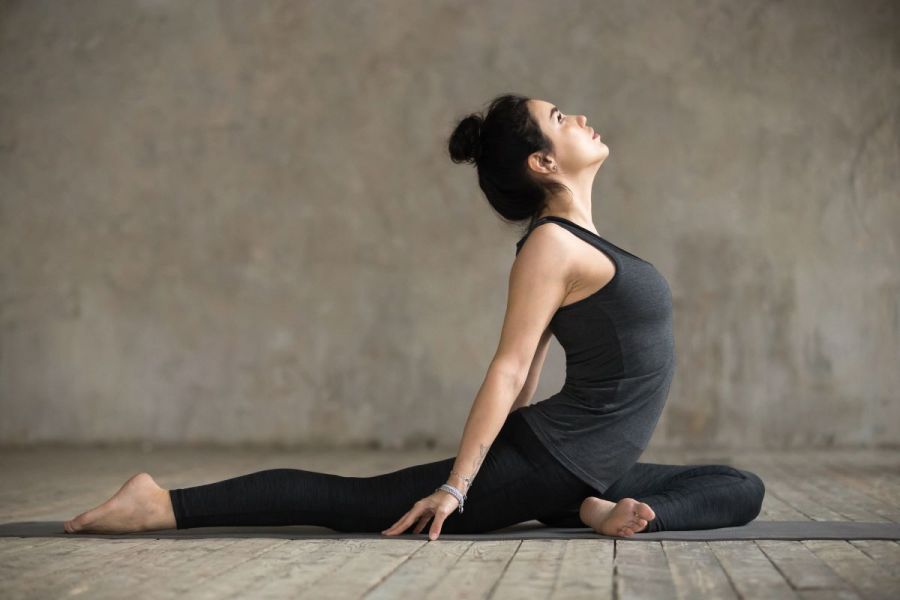Whether you’ve been spending long hours at your desk or training for a 10K, chances are your hips could be tightening up. Discover the best hip-opening yoga poses and exercises to help you loosen up…
We’re all guilty of spending many hours sitting down – and suffering tighter hip muscles as a result. Maybe you have a long commute on top of your office job, or perhaps working from home makes you less likely to take an hour’s lunch break.
Complete beginner to yoga? Check out our beginner’s guide to yoga
Even your fitness regime could be causing your hip muscles to shorten – Spinning, poor squat form or lots of running without stretching can cause the area to tighten up – which is not good news. Tense hip muscles can limit your range of motion, shorten your stride length when running (reducing sprint times), strain your back muscles and increase your risk of injury.
What’s more, research in the International Journal of Sports Physical Therapy shows reduced hip-flexor length means your glutes will be less activated and you’ll have a lower glute-to-quad (rectus femoris) activation ratio, meaning you’ll have to depend more on your hamstrings, potentially causing them greater stress and leading to earlier fatigue, say the researchers.
Related: Best yoga poses to stretch and strengthen your back
The anatomy of your hips
You’re probably familiar with the principles of the hip flexors, if not their individual names. They’re the ones that allow you to bend at the hips, raise your knees and swivel your hips – and include rectus femoris (one of the quads), iliacus and psoas (see muscle focus, below) and sartorius. As well as influencing your performance, tight hip flexors can also lead to lower back, glute and even neck pain.
Your hip extensors (glutes and hamstrings), on the other hand, are the ones that stabilise your pelvis and propel you forwards when walking and running. The hip adductors, especially adductor magnus, draw your thighs together, while the abductor tensor fasciae latae, on the outside of your hips, take the legs away from the midline and let you rotate the thighs inwards.
Imbalance, lack of strength or excessive tension in any of these muscles can impede performance and increase injury risk. Turn the page for a hip-opening yoga workout to release tight hips and increase range of motion.
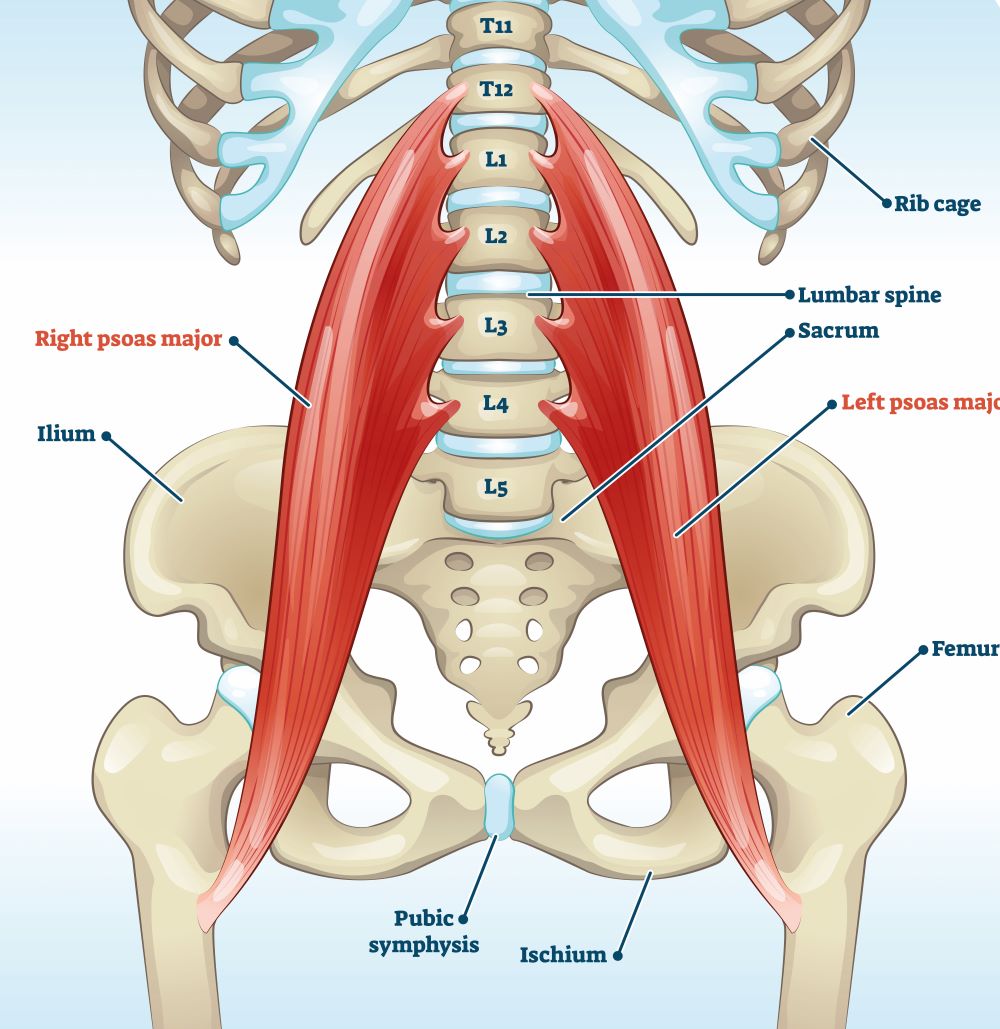
What is the psoas major muscle?
Get to know the only muscle in your body that connects your spine to your legs…
Anatomy: Psoas major is your largest hip flexor, and originates on the lower spine (it attaches to all five lumbar vertebrae) and ends on the inside of your upper thigh bone (a small bump known as the lesser trochanter). It’s often referred to as iliopsoas, as the iliacus muscle also attaches to the lesser trochanter.
- Action: The main hip flexor, your psoas allows you to raise your knee. It also rotates the thigh outwards (laterally) and flexes the trunk, as in come up to sitting up from lying on your back.
- Everyday use: Climbing stairs, walking uphill
- Sports use: Rock climbing, football and running, especially sprinting
- Common problems: When tight, it increases the curve in your lumbar spine (lordosis), leading to lower back pain
- Stretching poses: Crescent moon, low lunge
- Strengthening poses: Tree, standing big toe pose
Related: 5 best yoga poses for building leg strength
Best hip-opening yoga poses
How to use these poses: Practise this sequence two or three times a week will soon see an increase in your hip flexibility.
Warm up:
- To begin, warm up your body with some standing arm swings (quickly rotate your torso from side to side, allowing your arms to swing freely around your body like pieces of rope).
- Then do a few squats, first with feet hip-distance apart and then with feet a couple of feet apart (in a plié squat). Pause at the bottom of the plié squats for a few moments to help your hips begin to soften. Then, do a few standing single leg swings, focusing on extending the leg backwards, to warm up your hip flexors.
- Next, lie on your back and come into thread the needle for five deep breaths on each side, before resting for a minute or two in happy baby pose.
Hip-releasing yoga sequence:
For the following hip-opening yoga poses, we use the principles of yin yoga, where you remain in the pose for long periods in order to help muscles and fascia deeply release.
Follow the timings under the individual poses, building up to three or four minutes, but use your own body as a guide and direct your breath into any tight areas. If a joint or muscle does feel tight, simply pause at that point, allow your body to naturally adapt and soften, then go a little deeper once your body is comfortable to do so.
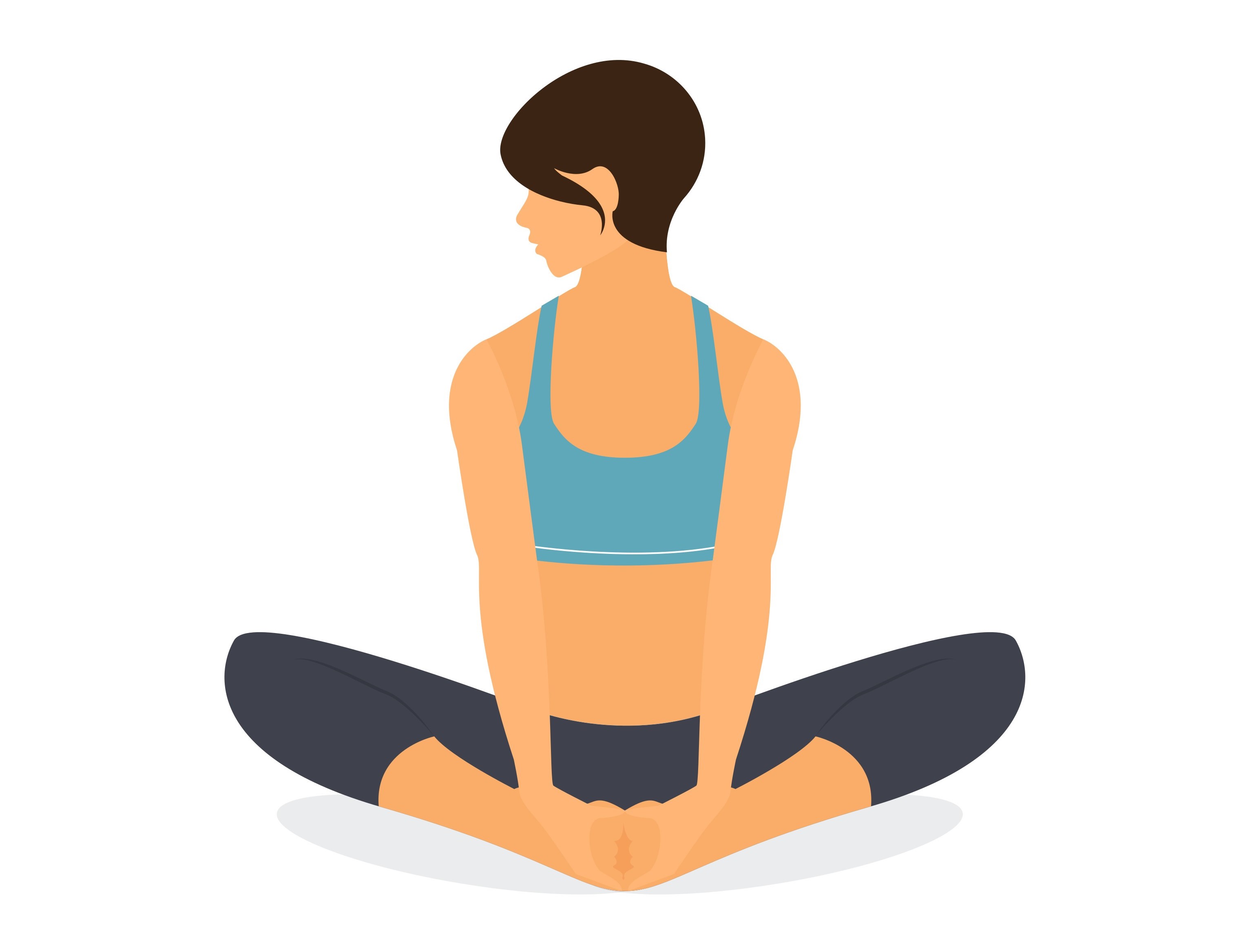
Bound angle
Good for: Opens the hips, stretching the inner thighs (adductors) and increasing flexibility in the groin
Hip focus: Iliopsoas engages, adductors (longus and magnus) strongly stretch, as do the quad muscles.
- Alignment: Sit with legs together, your weight directly over your sitting bones (sitting on a block or folded blanket can help).
- Take a deep breath and allow your weight to sink downwards.
- Bend your knees and let them fall out to the sides as you draw the soles of your feet together. Clasp your ankles. Allow your shoulders to release, draw the shoulder blades down and lift your chest.
- Ground through your sitting bones to find length in your spine. Rest here for up to three minutes, breathing slowly and deeply.
Make it easier: Place blocks beneath the thighs or knees.
Make it harder: Deepen the stretch by folding forward
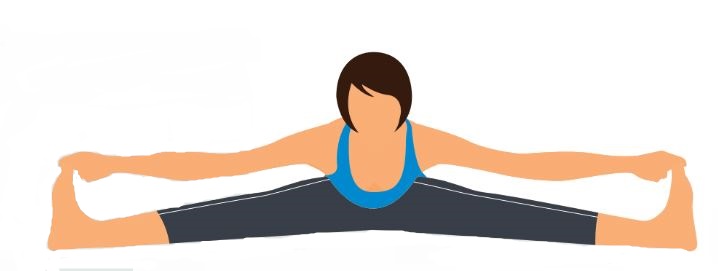
Seated wide angle forward bend
Good for: Opens the hips, loosens lower back, stretches the inner thighs, releases the groin
Hip focus: Leg extensors engage, deep rotators release, adductors lengthen and stretch.
- Alignment: Sit with legs wide, ankles flexed, feet resting on the centre of back of heel. Separate the flesh of your buttocks, backwards and away from your mid-line, so you can sit on the front of your sitting bones.
- Place hands beside hips and root through your fingertips and sitting bones to lengthen the spine. Draw in your navel, open your chest and slide shoulder blades down your back.
- On an inhale, lengthen your front body by drawing your lower back forward. Then, place your hands on the floor in front of you, exhale and walk your hands forward as you fold forward from hips, leading with your heart. Place your hands on your calves, ankles or take hold of your big toes (pictured). Rest in the pose for one-to-two minutes.
- To come out, draw your navel to your spine and walk your hands back in to come up to sitting.
Make it easier: Have legs narrower, bend knees slightly, rest head on an upright bolster.
Make it harder: Take legs wider and lower chest closer to the floor.
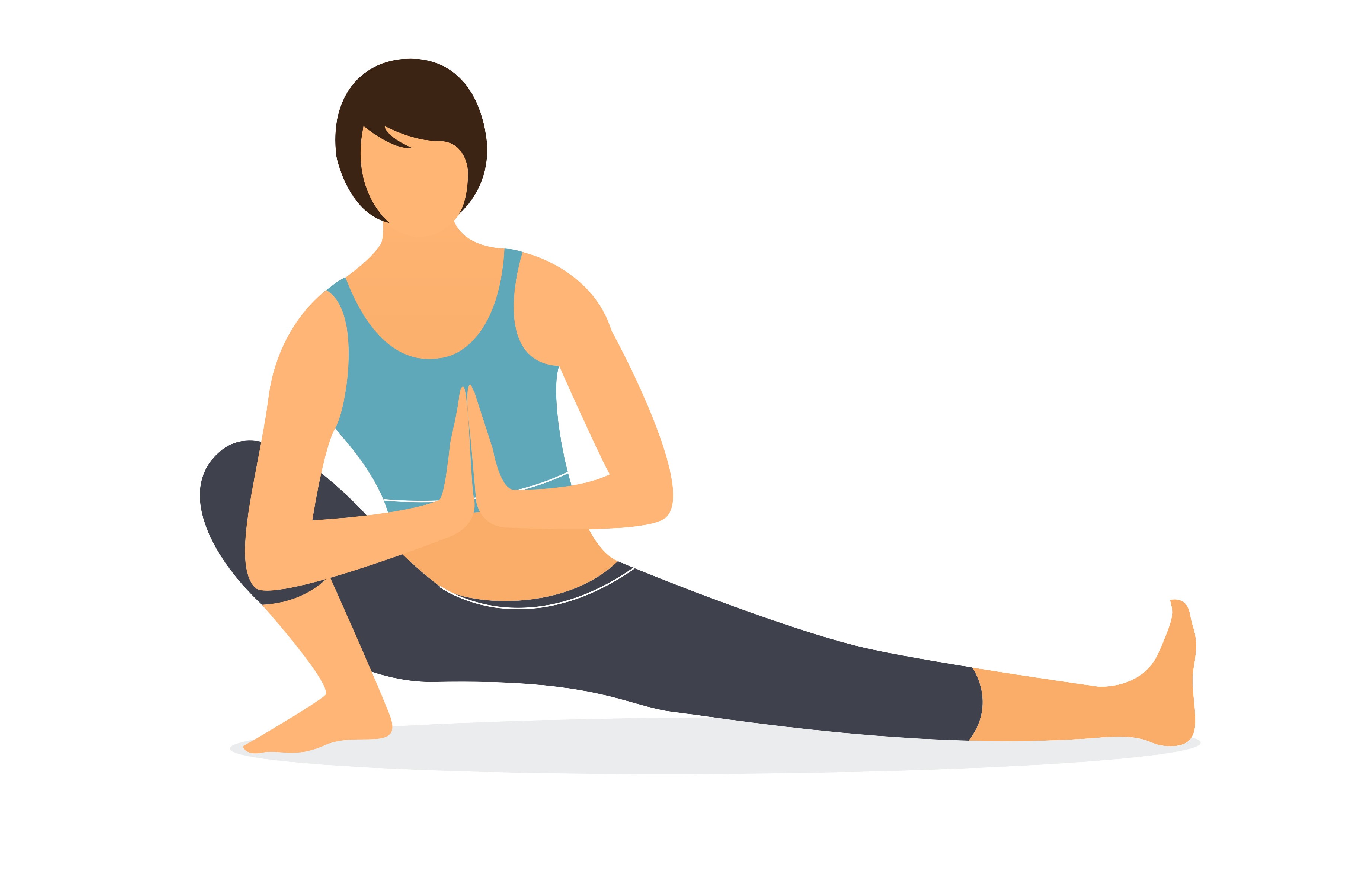
Side lunge
Good for: Opens hips, lengthens hamstrings, strengthens lower body and core, improves balance
Hip focus: Stretches adductors and groin.
- Alignment: From standing, take feet wide apart and slowly transfer your weight onto your left foot. Lower into a deep bend on the left, taking your knee out to the side and keeping knee and toes pointing in the same direction. Lower hands to the floor to aid balance.
- Extend the right leg and flex the ankle, toes pointing upwards. Draw your navel to your spine, as you slowly bring your spine to vertical and take hands to prayer position. Remain for five-to-10 deep breaths.
- Return hands to the floor, then transfer your weight onto the right foot and repeat on the other side.
Make it easier: Keep foot of straight leg flat on the floor (pictured), place hands on the floor for balance, point bent knee to front rather
than the side.
Make it harder: Challenge balance with closed eyes.

Lizard
Good for: Opens hips and groin, releases hips, strengthens inner thighs
Hip focus: Front leg – hip flexors and external rotators stabilise hip and knee. Back leg – hip extensors extend hip, hip flexors release.
- Alignment: From downward dog, step your left foot between your hands and lower onto right knee, back toes flat on the floor. Raise your left hand, heel/toe left foot towards edge of mat, and replace your hand on inside of left foot. Check your left knee is directly above your ankle, and ground through the base of your big and little toes.
- Walk your hands slightly forwards, lower onto your forearms, release your hips forwards and down, and extend your heart forwards to lengthen your spine while simultaneously drawing your shoulders down your back. Lightly draw your navel towards your spine.
- Remain in the pose for up to a minute, breathing deeply and slowly, then repeat on the other side.
Make it easier: Rest on hands rather than forearms, and don’t go too low.
Make it harder: Tuck back toes under and raise your back knee.
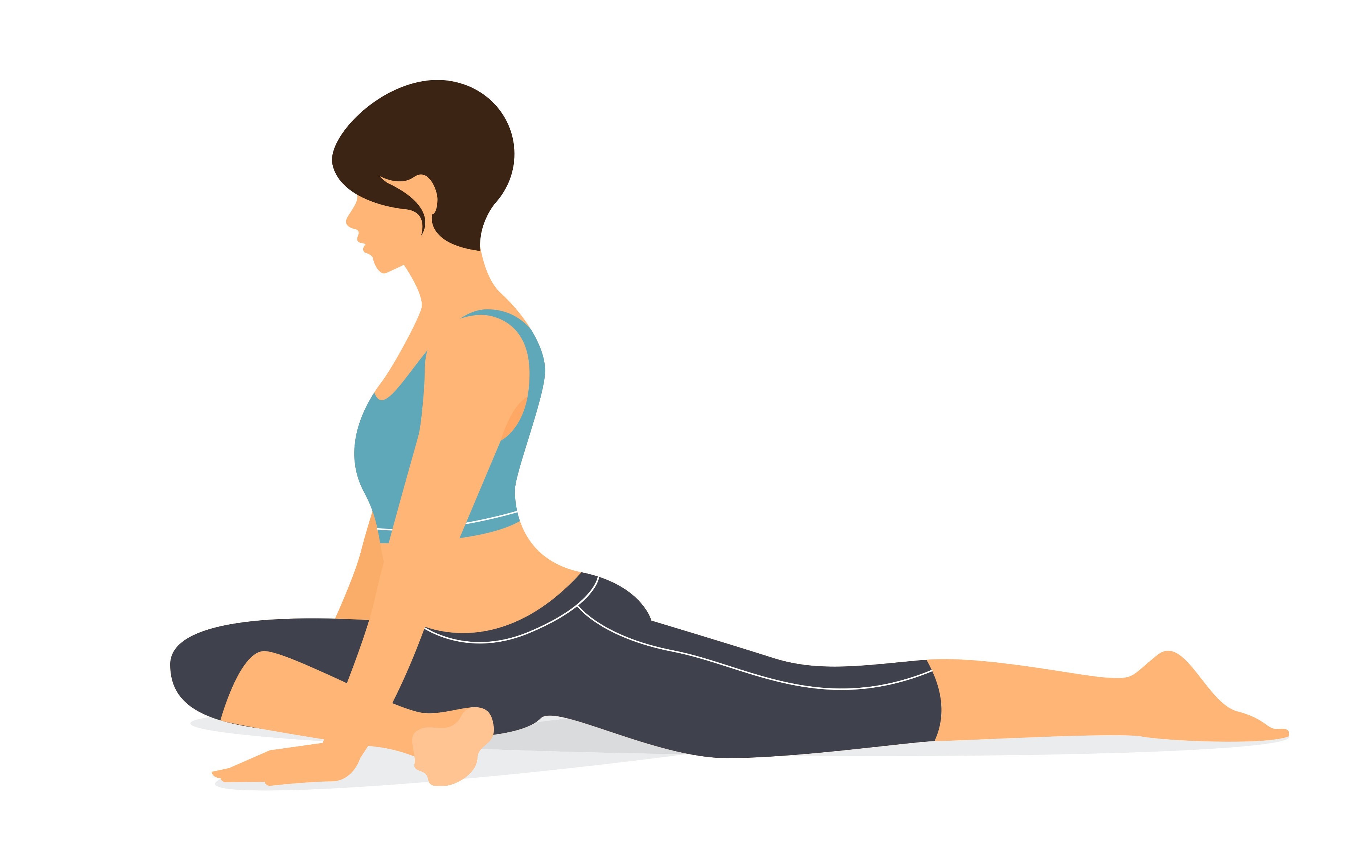
Half pigeon
Good for: Opening the hips and groin, increasing range of motion in the hips, lengthening hip flexors
Hip focus: Front leg – adductors engage while stretching. Back leg – hip flexors, including psoas, release.
- Alignment: From all-fours, place your right knee outside of your right wrist, shin at a 45-degree angle, left heel close to left hip. Slide your left leg back, resting on the centre of thigh. Draw your left hip forwards and right hip back to square the pelvis. Inhale and root through your hands to lengthen your spine.
- Stay in the pose for up to three minutes, breathing evenly.
- When you are ready to come out, inhale and root through your hands to gently release your legs. Repeat on the other side.
Make it easier: Place a block or firm cushion under the hip of bent leg, fold forwards to rest forehead on folded arms.
Make it harder: Place front shin parallel to front edge of the mat, raise back lower leg and grasp foot with opposite hand.
Words: Eve Boggenpoel | Images: Shutterstock

